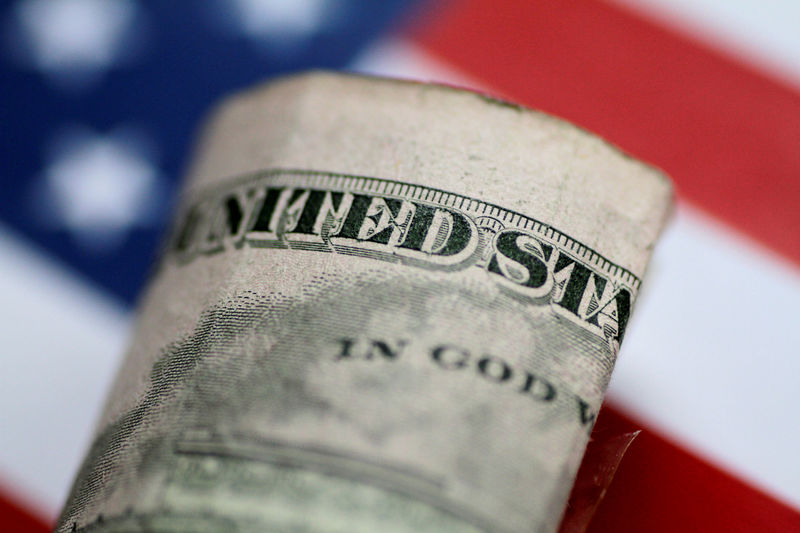By Peter Nurse
Investing.com - The U.S. dollar weakened in early European trade Friday, on course for a weekly loss, amid uncertainty over the extent of the Federal Reserve’s future tightening path.
At 02:55 ET (07:55 GMT), the Dollar Index, which tracks the greenback against a basket of six other currencies, traded 0.2% lower at 104.782, dropping back from the two-month high of 105.36 seen at the start of the week.
The dollar index is on course to fall 0.4% this week, which would be the first losing week since January.
Hitting the greenback was the suggestion that the Fed may stick to its moderate monetary tightening path for the market following comments by Atlanta Federal Reserve President Raphael Bostic.
Bostic said he favored "slow and steady" as the appropriate course of action for the Fed, arguing for a hike of 25 basis points later this month, adding the impact of higher interest rates may only start to be felt in the spring.
A series of robust economic data releases, including inflation proving to be sticky at elevated levels, had got traders thinking that the U.S. central bank could deliver a 50 basis point rate hike in two weeks’ time.
Elsewhere, EUR/USD rose 0.2% to 1.0617, climbing off a near two-month low of 1.0533 at the start of the week.
Inflation has come in higher than expected in the Eurozone this week, pointing to more interest rate hikes by the European Central Bank, on top of the 50 basis points that have already been signaled for mid-March.
ECB President Christine Lagarde said on Thursday that interest-rate increases may need to continue beyond the planned move, as policymakers will do everything to return inflation to the 2% target from the current above 8%.
Morgan Stanley raised its forecast for the ECB’s terminal rate to 4% earlier Friday, from its earlier prediction of 3.25%, citing the region’s hot inflation numbers.
The central bank’s key rate currently stands at 3%.
GBP/USD rose 0.3% to 1.1980, remaining under 1.20 as expectations grow that the Bank of England will pause its tightening cycle before its major peers given the weakness of the U.K. economy.
USD/JPY fell 0.2% to 136.47, with the yen helped by the easing of U.S. yields, while inflation in Tokyo eased from an over 40-year high in February, data showed on Friday, but still remained at relatively high levels.
NZD/USD rose 0.2% to 0.6227, AUD/USD climbed 0.3% to 0.6750 and USD/CNY fell 0.2% to 6.9018, after Chinese services activity data grew at a faster-than-expected pace in February, pointing to a recovery in the second largest economy in the world.
